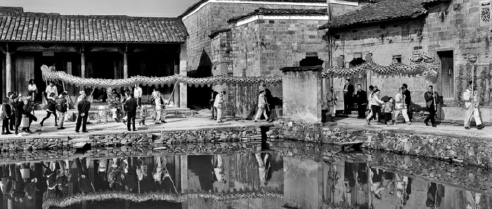 |
|
A dragon dance in the village square.[Photo provided to China Daily] |
To renovate Xu's house and transform it into a house more comfortable for living cost about 700,000 yuan, which he was unable to afford. In fact, Xu paid about 300, 000 yuan and the rest was provided by the local government and Saving Traditional Houses Initiatives, a program run by the China Foundation for Cultural Heritage Conservation.
On March 18, the foundation launched its second round of renovations in Jinxi county, which has 101 ancient villages with about 11,000 traditional houses built more than 400 years ago, the majority of which are in urgent need of repair.
Over two years, the foundation will spend 80 million yuan on renovating old houses in Jinxi county, with 40 million yuan provided by the Ministry of Finance and State Administration of Cultural Heritage, and 40 million yuan by the local government.
Li Xiaojie, director of the China Foundation for Cultural Heritage Conservation, says that a decade ago, many experts lamented that traditional villages were quickly disappearing. However, since 2012, the central government has been leading efforts to revitalize them to stop them from disappearing.
"China's 5,000-year history of agriculture is rooted in its villages. And a village's history and culture is reflected on its buildings. Without the old houses, there will be nothing left," says Li.
Li's foundation launched its first renovation program two years ago in Songyang in Zhejiang province, where ancient houses built hundreds of years ago were carefully renovated, attracting many young people to return to the villages.
However, the number of ancient houses in Jinxi is far more than that in Songyang, while the government's financial support is the same. It means that it's more difficult and needs local house owners to be more active in repairing their houses, says Li.